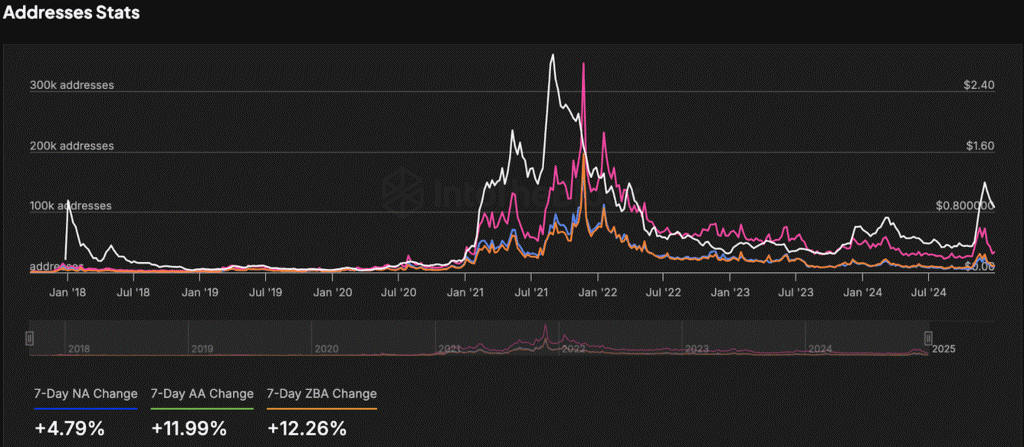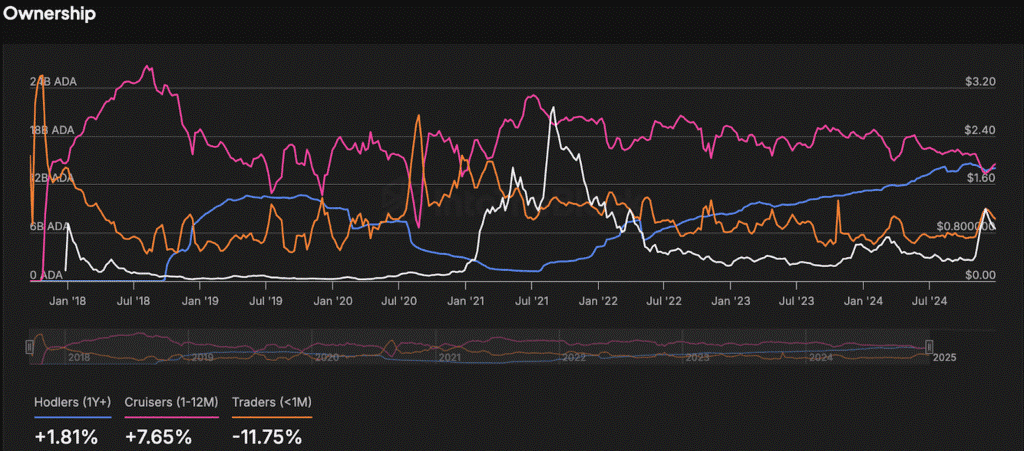An analyst from platform X has recommended not to sell Cardano (ADA) below the $5 threshold in this cycle, citing the project's long-term growth potential as still very large. This recommendation comes amid the Cardano ecosystem making notable advancements, including the launch of the Cardano Card payment card.
Developed by Emurgo — the entity responsible for promoting the commercial application of the Cardano blockchain — this card allows users to easily withdraw cash from digital assets, including ADA, Bitcoin, Solana, and even stablecoins like USDC or USDT.
The launch of the Cardano Card not only connects the cryptocurrency world with traditional finance but also opens up the ability to use digital assets in everyday transactions. Users can spend globally while contributing to the expansion of the Cardano ecosystem — a significant step towards the mainstreaming of crypto in real life.
Features and benefits of the Cardano Card.
The Cardano Card is designed with the goal of simplifying the use of cryptocurrency globally. Users can load ADA, BTC, SOL, or any supported token onto the card to conduct transactions in real life, from shopping and dining to paying for services.
Although advanced use cases will be added over time, from the initial announcement, it is clear that the project's direction is to bring blockchain closer to everyday users through daily applications.
However, the Cardano Card is not just a payment tool. It also plays a role as part of the governance mechanism of the Cardano network. Specifically, a portion of the profits from card operations will be donated back to the Cardano Treasury, thereby promoting the development and sustainability of the ecosystem in the long run.
This is a step that clearly reflects Emurgo's vision for decentralized governance and commitment to empowering the community within the Cardano ecosystem.
In addition to spending functions, the Cardano Card also promises to offer many exciting utilities. Cardano holders will be able to stake their ADA to receive rewards, use ADA as collateral to borrow stablecoins, and earn on-chain ADA rewards for purchases made with the card.
Subsequently, users will qualify for exclusive airdrops and have the potential to earn from tokenized real-world asset (RWA) deposits.
These features aim to interact with users and empower them more over their cryptocurrencies.
ADA price performance and analysts' predictions.
As the Cardano ecosystem continues to expand and record significant progress, the price of ADA has seen considerable volatility. At the time of writing, ADA is trading around $0.74, up 2% in the past 24 hours and over 21% in the last 7 days. While the price may experience short-term fluctuations, the overall market sentiment remains quite positive, with many analysts believing that ADA still has room for long-term growth.
One of the notable voices is Mr. Banana, a renowned market analyst on platform X, who has recommended not to sell ADA at this time. He predicts that this token could increase sixfold in value while suggesting investors hold until ADA reaches a new historical peak — $5 in this bullish cycle.
Mr. Banana's confidence is based on the solid foundation of the Cardano ecosystem, even though he does not provide specific details about the forecasting model. However, his optimistic viewpoint is reinforced by a series of recent positive developments within the Cardano community.
Among these, the launch of the Lace Wallet has made a significant impact. This is seen as an important milestone, paving the way for the deployment of decentralized finance (DeFi) to Bitcoin users within the Cardano ecosystem — a potential bridge between the two major networks.
In addition, the community is also filled with hope regarding the potential launch of a spot Cardano ETF — a factor that could unlock institutional capital and strengthen ADA's position in traditional financial markets.
Recent on-chain data for Cardano's price indicates a growth trend.
The latest on-chain indicators show that activity on the Cardano network is increasing significantly. Specifically, the number of unique user addresses (NA) has risen by 4.79% in the past week, reflecting an increase in user traffic on the blockchain.
Even more noteworthy, the number of active addresses (AA) — representing wallets that carry out transactions — has also skyrocketed by 11.99%, showing that transaction volume is larger or that the network is attracting more users interacting positively.
These figures not only reinforce confidence in Cardano's growth momentum but also demonstrate an increasingly vibrant ecosystem — a key factor in maintaining and boosting the value of ADA in the long run.

In addition to network activity indicators, the value of ZBA (Zero Balance Addresses) — representing the number of addresses returning to a zero balance — has increased by 12.26%. This may reflect that some investors are selling or liquidating assets, potentially due to short-term market corrections or changes in usage intentions. However, from a positive perspective, this indicates that the Cardano network remains active and healthy, rather than falling into a stagnant state.
Alongside this, the balance chart over time continues to show a positive trend in the community's holding behavior. The ratio of long-term investors, those holding ADA for over a year, has increased by 1.81%, reflecting a strong belief in the project's long-term potential.
Notably, the mid-term holder group — also known as cruisers, those holding ADA for 1 to 12 months — has surged by 7.65%, indicating that smart money is actively accumulating in the current phase.
These data not only reflect the stability of the Cardano community but also highlight a strategic shift from short-term trading to long-term accumulation — a factor often associated with sustainable growth phases.

On the flip side, the number of short-term ADA holders — those holding tokens for less than a month — has decreased by 11.75%. Although this can be seen as a corrective signal from the day-trader group, it also reflects a positive shift in market structure.
Specifically, an increasing number of users are shifting from speculative behavior to long-term holding, indicating they are becoming more committed and loyal holders within the Cardano ecosystem. This trend is an optimistic indicator, showing growing confidence in the project's future as well as ADA's potential for sustainable growth in upcoming cycles.